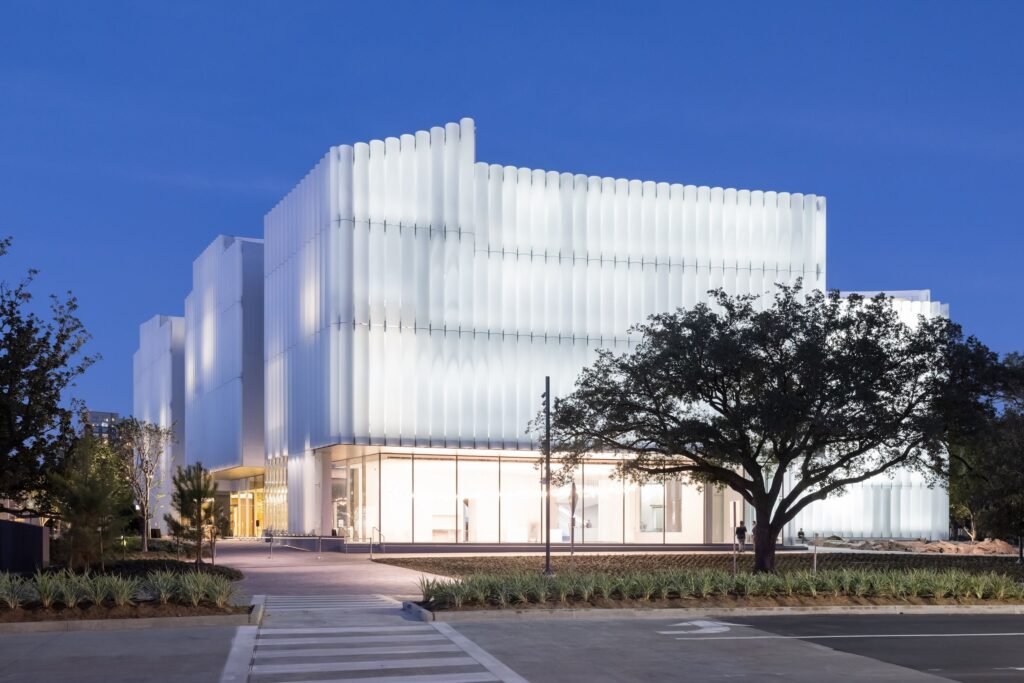Blog
The Art of Facade Lighting for Commercial and Public
Illuminating facades is an artwork. Creating and executing facade lighting plans requires each artistic and technical processes. This submit explores the strategies and impacts of profitable facade lighting.
Architectural lighting design serves and enhances sure architectural parts to foster, set up or emphasize a constructing’s aesthetic, historical past and goal. Facade lighting enhances and elevates exterior structure parts. Facade lighting can apply to any sort of architectural undertaking, however the constructing use ought to information the lighting design. Hospitality facade lighting might be inviting, heat and attention-grabbing, but tactful. Excessive-end eating places profit from extra elegant and ornamental facade lighting. Retail facade lighting ought to match the corporate branding and profit from distinctive and elaborate designs. Facade lighting is a strong solution to spotlight architectural exteriors, reveal materiality and rework how a constructing or construction seems at night time. The methods described concentrate on non-residential initiatives.
Gentle ranges
When designing the lighting for a constructing facade, pedestrian security, vitality consumption and results on individuals and the atmosphere should all be thought of. To know lighting rules that reduce gentle air pollution and different undesired results, evaluation this information on darkish sky lighting. As an alternative of specializing in concentrating on the horizontal illuminance ranges that create comfy areas to inhabit, facade lighting is extra centered on executing lighting ideas with the suitable gentle ranges that specific the structure. Architectural facade lighting transforms a undertaking’s surrounding neighborhood at nearer and farther scales, impacting the expertise of the fast areas surrounding the constructing.
To start a facade lighting design, first decide the baseline footcandle illuminance to focus on. Lighting zones categorize the quantity of sunshine that’s acceptable for a undertaking primarily based on the city density of its location (LZ4 is essentially the most dense class, whereas LZ0 is essentially the most with out city exercise).
- For the most typical energetic city lighting zone (LZ3), assuming a medium reflectance facade materials, the goal illuminance ought to vary from 0.2-1.5 footcandles.
- For any step up or down within the lighting zone class, multiply the goal footcandle quantity by 2 or divide by 2 accordingly (for instance, LZ2 would goal 0.1-0.8 fc).
- Equally, if the facade materials has a excessive or low reflectance, multiply or divide the goal footcandle quantity by 2 accordingly (instance: low reflectance materials in LZ3 ought to goal 0.4-3 fc).[1]
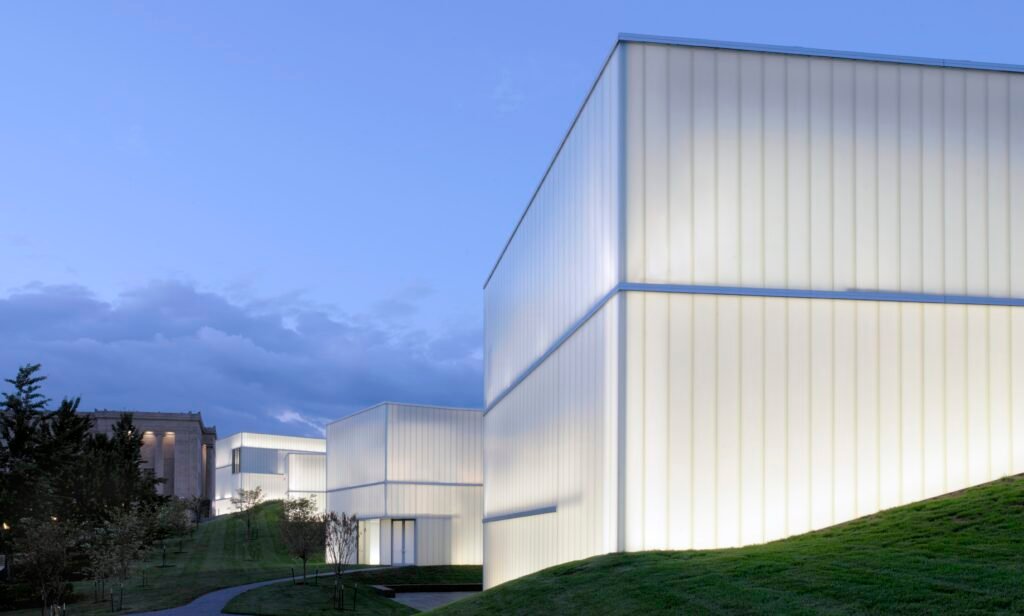
Use these advised footcandle illuminance ranges to specify the best lights for a facade. Contrasting the sunshine ranges between totally different architectural facade elements is a crucial step in creating a hierarchy of how the design is skilled. Additionally, particular parts, akin to constructing entrances, might profit from increased gentle ranges. A constructing entrance (in Lighting Zone 3 with a medium reflectance materials) ought to goal as much as 4 footcandles on the bottom and two footcandles vertically. If downward-oriented facade lighting can also be supposed to gentle a pedestrian path, goal three footcandles.
Lighting fixture producers are nice sources to help in deciding on the fixtures that meet a undertaking’s goal illuminance targets. Utilizing fixture samples to check a desired impact can also be efficient within the lighting design course of. With the intention to discover the best sorts of facade lights, first outline the architectural facade idea that you just want to obtain.
Facade lighting methods & methods
Facade lighting expresses design concepts by complementing structure. An architectural undertaking might have an present exterior design, construction, materials or sample that needs to be captured via synthetic lighting. Executing facade lighting requires utilizing the suitable fixtures and methods to create the specified results.
Massive-sized architectural facade parts, akin to partitions, paneling, indicators and roofs, are sometimes illuminated with flood lighting, level sources or linear lighting. Lighting to graze a facade component usually advantages from putting the sunshine supply near the goal floor. The grazing impact reveals materials texture and is finest completed with fixtures that use a good beam unfold projected alongside the fabric’s floor.
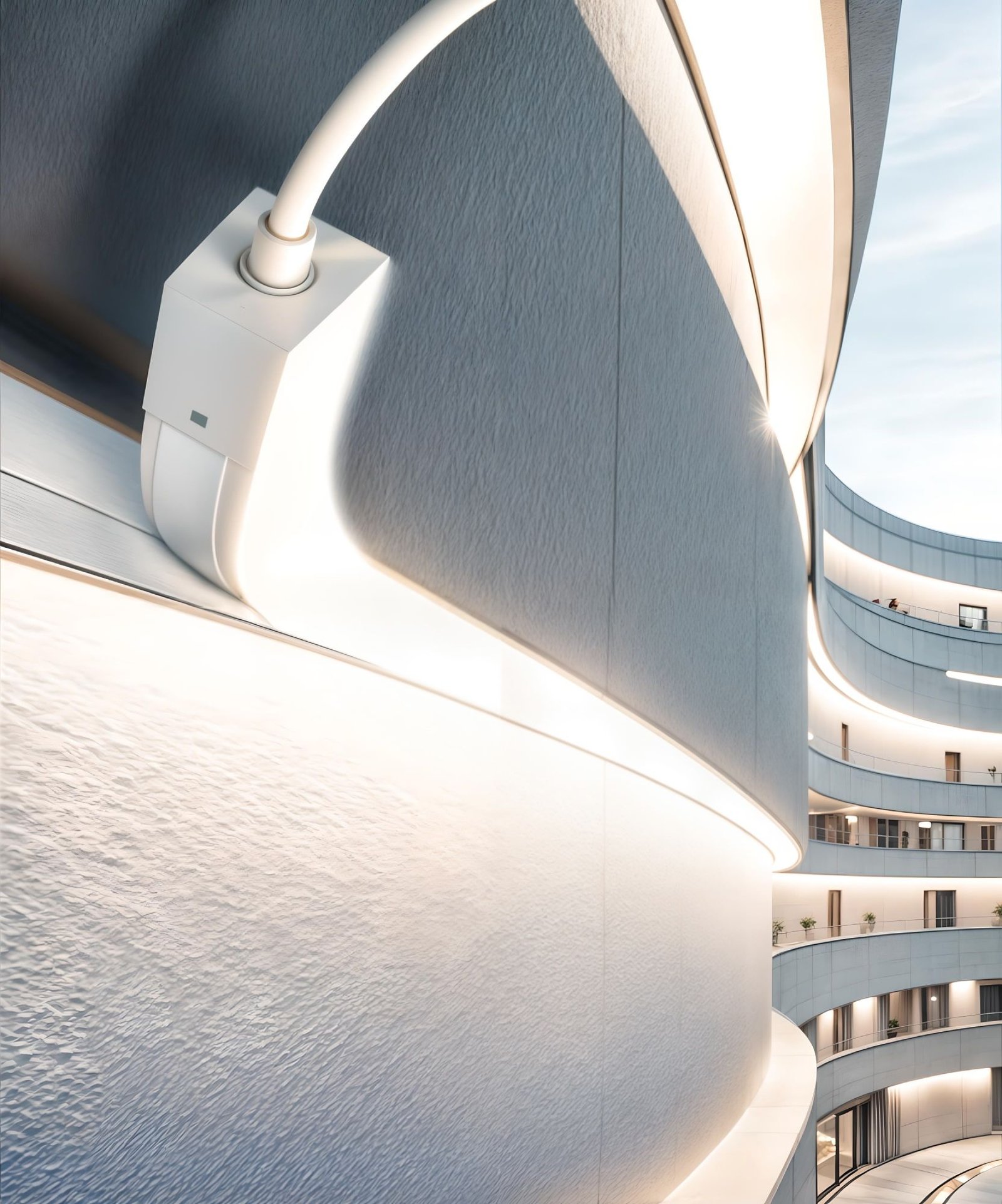
Conversely, the wall wash lighting impact offers a good illumination throughout a floor. Wall washing is finest completed with fixtures that unfold the distribution of sunshine alongside that floor, and advantages from putting the fixture farther from the goal floor. Use surface-mounted linear wall wash fixtures or in-ground linear wall wash fixtures for wall wash or wall grazing circumstances. Utilizing coloured lighting (RGBW) can also be an effective way to create a saturated coloration impact on a facade.
Exterior uplighting has just a few key variations in its impact versus downlighting. Downlighting sources are usually positioned farther from the viewer as they’re mounted from above, which can be comfy to view whereas able to offering pedestrian lighting on the bottom. Uplighting expresses a direct relationship with the bottom whereas creating a novel impact as it’s directed in direction of the sky. Utilizing outside downlighting is a discrete technique of making a sample of illumination for facade parts in addition to outside circulation lighting. In-ground uplights can create a patterned succession of sunshine towards a facade, in addition to illuminate the underside of a cover.
Flood lighting is a straightforward and reasonably priced solution to illuminate a wall or different giant facade component. Flood lights may be mounted in varied methods, and illuminate a whole facade with restricted fixtures. Wall packs and different wall-mounted fixtures are additionally efficient for lighting a facade. Wall-mounted fixtures can carry a chic contact and complement an architectural language.
Particular facade lighting methods additionally embody using direct-view fixtures, steady lights, translucent materials glow methods, facade perforations, gobo projectors, framing projectors and rather more. Direct-view lights are designed for individuals to view the fixture’s luminance immediately and are sometimes used to stipulate architectural parts. Coloured RGBW direct-view fixtures are efficient for making a visually compelling architectural language. Integrating openings to a facade, which permit gentle to shine out, can create a design relationship between inside and exterior areas. Using projector lights is one other thrilling technique for highlighting particular facade parts or displaying patterns on a floor. Choosing the proper method for lighting a facade is essential to the success of the design.
Excessive-level ideas and precedents
Combine lighting design with the facade. When gentle and materiality harmonize, the ultimate product is transformative. Facade lighting can captivate pedestrians and elevate communities. Facade lighting could also be discreet or provocative, so take the environmental setting into consideration.
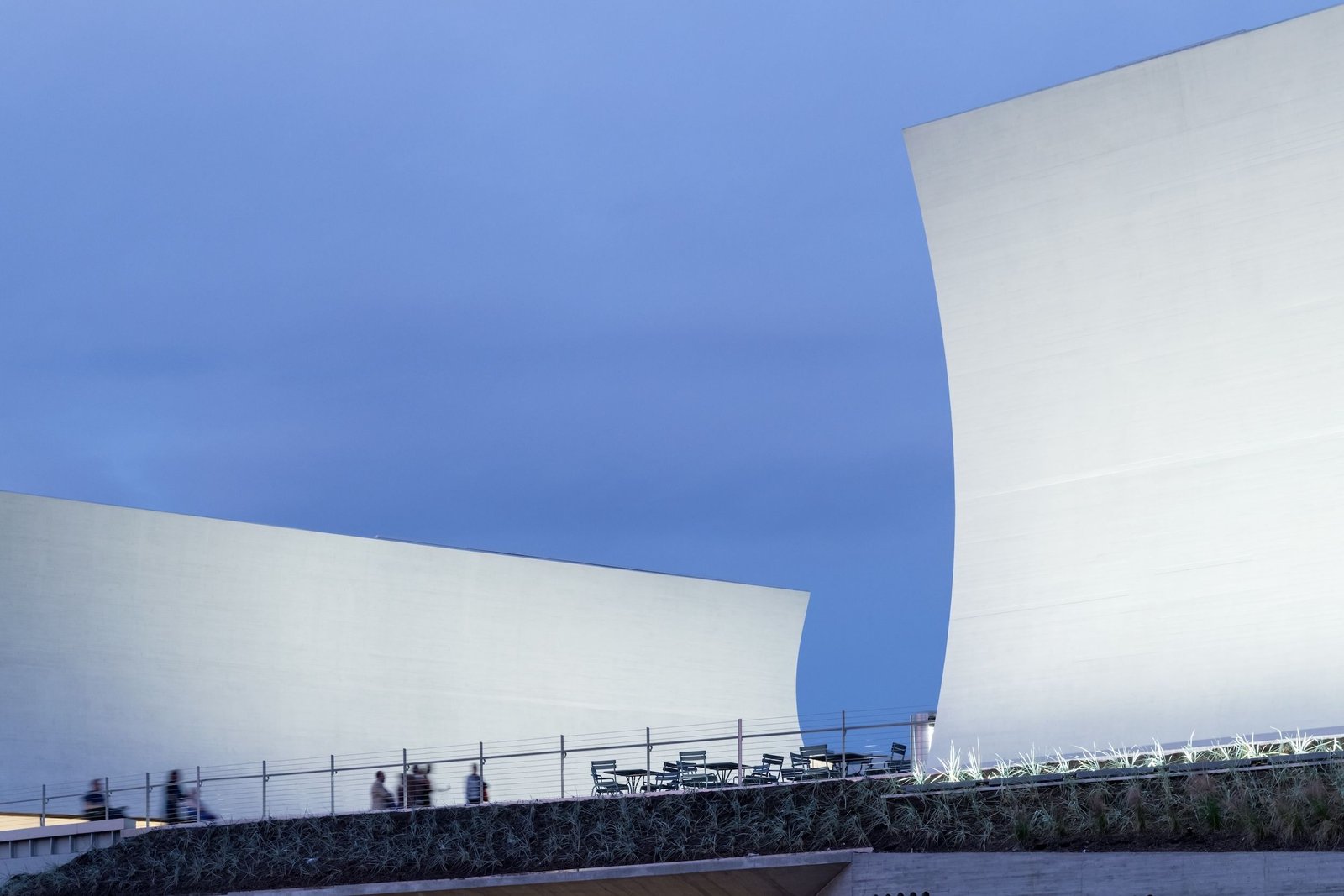
Proven above, directional flood lighting artistically illuminates the elegant curves of the REACH Kennedy Middle for Performing Arts. This technique of utilizing a number of flood lights oriented alongside the sweeping facade evenly renders the constructing’s exterior void areas whereas sustaining the uneven language of the design. The illuminated varieties distinction the night sky to create an inviting outside environment. This lighting method enhances the sleek however textured materiality of the stable varieties.
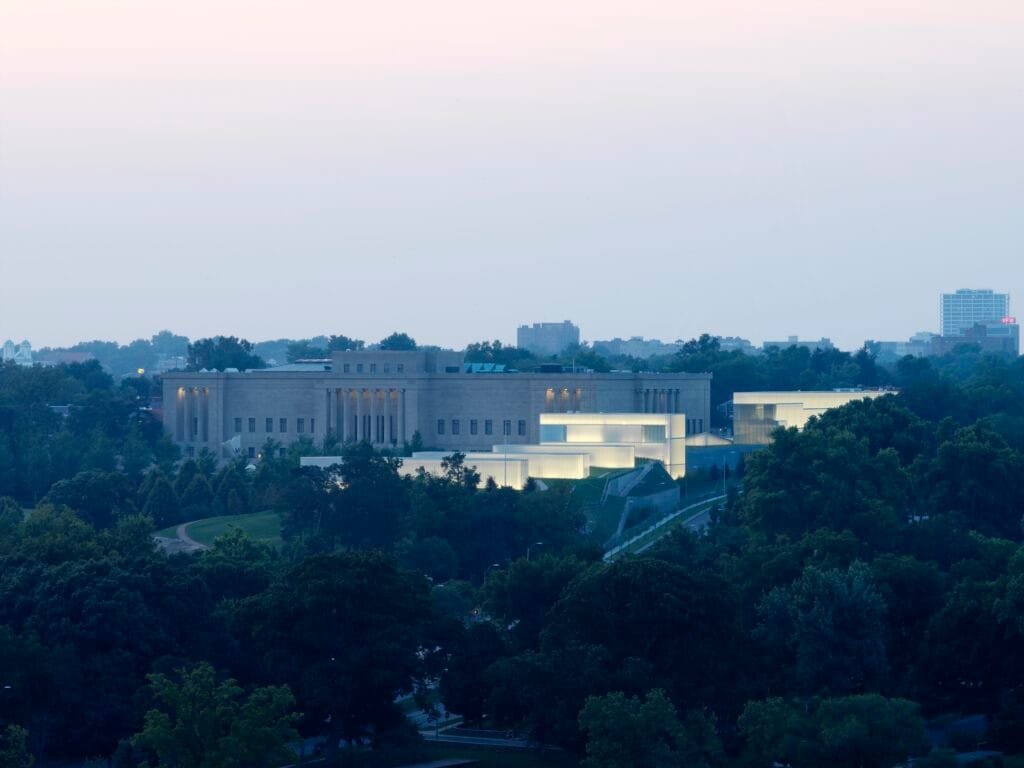
Proven above, the facade of The Nelson-Atkins Museum of Artwork reveals glowing volumes rising from the panorama. Linear lighting is built-in intoto the inside of the facade to light up the translucent supplies. The impact of this glow that wraps the architectural varieties is a logo of the town for miles round. Making use of this single method to the layers of the facade lots creates an ethereal floating impact.
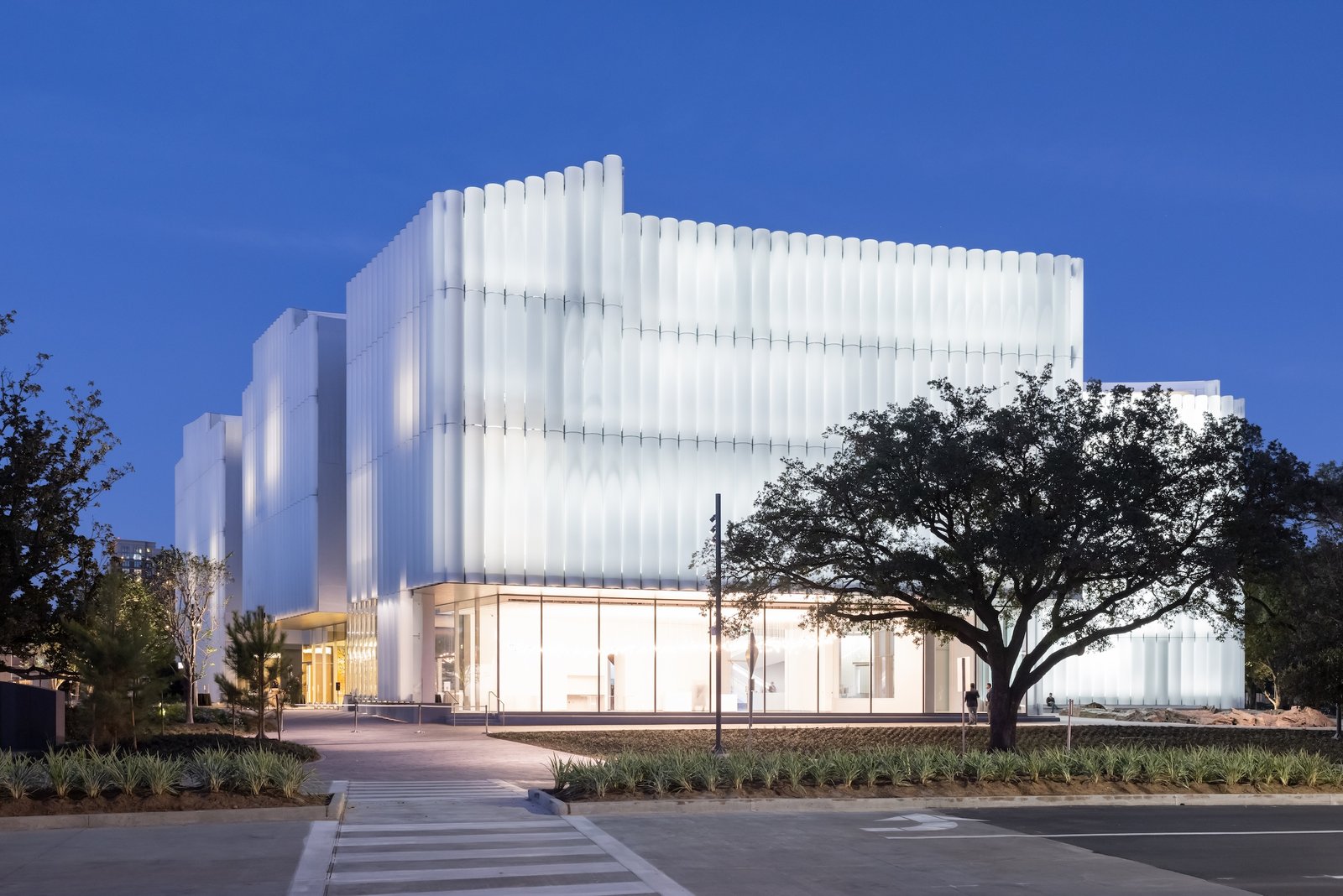
The Nancy and Wealthy Kinder Museum of High quality Arts combines translucent facade glow with perforations from the inside for an attractive design. The encircling glass tube curtain wall is illuminated from inside. The strategy of permitting particular moments of sunshine to shine via the fabric, suggests vitality from packages inside. The distinction between shiny and darkish circumstances alongside the facade transitions the facade’s language from a glowing quantity to a discreet playfulness of the pedestrian expertise. The moments of sunshine that penetrate the promenade-facing facade invite the curiosity of the general public.
Façade lighting rules
Lighting rules apply to circumstances particular to constructing facades. These rules profit vitality financial savings in addition to mitigate adverse results on the atmosphere. BUG lighting, lighting controls and wattage allowance necessities are all vital aspects of those rules.
In California’s Title 24 Power Rules (just like most different jurisdictions within the U.S.), BUG Ranking (Backlight, Uplight and Glare) necessities apply to all fixtures producing 6,200 preliminary lumens or extra.[2.1] If the outside fixture supposed meets this requirement to comply with the BUG Ranking rules, the next Lighting Zone of the undertaking have to be referenced. Lighting Zones immediately correlate to the quantity of backlight, uplight and glare allowed for any given outside fixture producing greater than the utmost allowable lumens.

All exterior lighting have to be managed individually from indoor lighting. Wall packs mounted 24 toes or decrease require movement sensors. Additionally, “all outside signal lighting shall be managed with a photocontrol along with an automated time-switch.”[2b] Whereas time controls aren’t required for many facade lighting, it’s nonetheless a good suggestion to make use of time controls and photosensors. It’s useful to show off facade lighting at an acceptable time to mitigate skyglow and adverse results on wildlife.
Title 24 regulation immediately addresses the allowed wattage for constructing facade lights. Facade lighting is simply allowed in Lighting Zones 2 via 4, and is calculated utilizing the floor space of the facade that’s illuminated. For the most typical class, Lighting Zone 3, 0.17 watts per sq. foot is allowed. For Lighting Zone 2, 0.1 watts per sq. foot is allowed.[2.3] Add all of the wattage for the luminaries used for the given facade space to ensure they continue to be lower than the entire allowable wattage. Some exterior circumstances, akin to constructing entrances and different sorts, allow further allowable wattage. Constructing entrances for Lighting Zone 3 enable for 19 watts for every door. For externally illuminated indicators, 2.3 watts per sq. foot is allowed. Seek the advice of the rules in a given undertaking’s jurisdiction for the relevant facade lighting allowances.
Conclusion
Integrating facade lighting into the constructing design course of brings structure to life. Facade lighting permits structure to remodel as day transitions to night. Use facade lighting to create an thrilling and phenomenal outside atmosphere. Being aware of the suitable gentle ranges, vitality consumption and potential results on individuals and wildlife are all vital when creating any facade lighting design. Comply with these methods described to create an impactful facade lighting scheme.
Sources:
[1] IES. RP-43-22 Recommended Practice: Lighting Exterior Applications. 2022. Web page 27-38: Gentle ranges. [2] California Power Fee. Title 24, Half 6. Building Energy Efficiency Standards. 2022.- Web page 211: BUG score
- Web page 411: Lighting controls
- Web page 472: Lighting energy allowance
Source link

